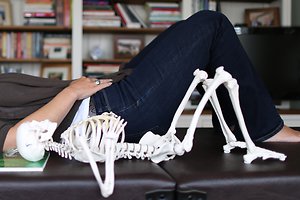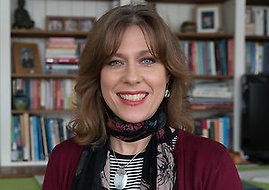How to....with Alexander Technique
The Alexander Technique teaches us the ‘how to’ of everything we do. How to do anything with more ease and poise and with less tension and strain.
Here are some easy to use tips to making every day activities easier and look after yourself.
How to Sit Well, with Ease and Poise
How to Stand at your Desk with Ease and Poise
How to do Constructive Rest (Semi-Supine) and Manage your Stress Effectively with the Alexander Technique
How to Use a Mobile Phone or Tablet without getting Text Neck
How to Choose the fitness class that's right for you
And lastly how to Breath Easy with the Whispered Ah
How to Sit Well, with Ease and Poise
When sitting make sure that your chair is right for you. Some simple suggestions:
•The seat should be flat or slightly sloping forward.
•Thus, your hips are the same height or slightly higher than your knees
•Your back is supported in an upright manner
•Be Grounded! Make sure that both feet are on the floor and that the whole of the sole of your foot (heels to toes) are on the ground. Just let gravity rest your foot fully on the ground. This allows our postural reflexes to work and makes sitting much easier. The foot wants to be directly under the knee, if possible.
•Learn to find your ‘sitting bones’! These are the two knobbly bits at the bottom of your pelvis. It is where it is most easy to balance and sit upright from in an easy way. The pelvis is anchoring you to the chair and your sitting bones are evenly sharing your weight.
•Release your legs! Think of releasing your legs away from your pelvis rather than pulling them into your body to help hold you up. Pulling in is tiring and tightening!
•Have a soft and tall body! People tend to alternate between the two extremes of either slumping/ collapsing forward or pulling themselves into a military style ‘shoulders back, chest out’ posture. We need to find the middle ground to make life easier. Think of the support for your torso coming up though the centre of you and release your tummy muscles. Imagine that your head is very lightly balancing on the top of your spine. Your whole torso can then lengthen and widen.
•Let your shoulders rest! Allow your shoulder girdle to rest on the top of your ribcage. There is no need to pull your shoulders back or forward, up or down. Let them flow away from one another, outwards.
•Breathe! When you release your tummy muscles, you can breathe more freely, feeling movement in your rib cage and tummy. This also allows the springy elastic support of your spine to find its natural and appropriate curves. Breathing freely in and out is also very relaxing.
This way of sitting looks graceful and easy, and is comfortable for long periods of time when you are used to ‘Alexander’ thinking and practised at it. But, to be healthy I would suggest sitting for no longer than 30 minutes without getting up and moving around for a while.
If you want to learn more and get a real feel for how the Alexander Technique can give you the skills to make everyday living easier and less stressful its always easier to get the full experience from a qualified teacher like myself.
How to Stand at your Desk with Ease and Poise
Equipment:
- Your desk needs to be at the correct height. Arms need to be 90 degrees or slightly more at your elbow, with your lower arms either horizontal or slightly sloping down. Make sure you are standing tall and relaxed to measure where the desk should be positioned. If your desk is to low you are likely to stoop, if it is too high you are likely to scrunch up your shoulders.
- Try not to stand for too long in high heeled shoes. Wearing heels throws your body out of alignment and it is very difficult to stand in balance in heels.
Body Use and Awareness
-How are you balancing on your feet? Are you standing on the balls of your feet or heels more? Do you have a habit of standing on one foot, or leaning onto one foot more? For optimal balance with need about 50% of our body weight on the front of our feet and 50% on our heels.
It is preferable to stand on both feet. If you like standing on one foot, swap from time to time.
- What are you doing with your knees? Are they 'locked' back? Are you pulling up your knees caps? Try to let your knees be 'soft' and released. Let the muscle of your thighs release so they let go of your knee cap.
- Do you lean forward at your hips towards your desk? if your hips come forward of your ankles this puts pressure on your lower back. Allow your hips to stay back, so that your ankles, knees and hips are stacked one on top of the other.
- Are you craning forward from the base of your neck to look at your work? This puts great pressure on your neck and back (popularly call text neck) and can cause pain and damage. If you need to lean forward think of hinging from your hips and keeping your spine and head in alignment.
Learn Constructive Rest (Semi-Supine) and Manage your Stress Effectively with the Alexander Technique
Stop
Think
Restore and
Energise in
Semi -
Supine
Lying in the semi-supine position for just 10 mins a day is the most effective way to de-stress. All you need is a floor and a few paper back books!
To get the most out of your constructive rest all you need to do is find a comfortable place to lie down on the floor. If you have hard flooring you may want to lie on a yoga mat or blanket for extra comfort. Place a few paper back books under your head, so that your head is supported and your neck is in line with your spine. This is usually a pile about 3-10 cm high. Place your hands gently on the bottom of your rib cage or on your tummy. Bend your legs and have your feet on the floor about hip distance apart and about 30-40 cm away from your bottom. Ideally keeping your eyes open to add to your sensory input.
For a great little You tube video on how to do the semi supine press play on the video below.
Allow yourself to be supported by the ground beneath you. Your head, back, arms and feet. Imagine your back lengthening and widening onto the floor and your neck softening. Send these thoughts, then let them go.
Think of your spine being springy and expansive.
Notice your breath as it comes in through your nostrils, notice the movement of your ribs as they expand and relax and the rise and fall of your abdomen. Allow your breath to breathe itself.
Notice your jaw - are your teeth clamped together and your jaw tight? Is your tongue stuck to the roof of your mouth? See if you can allow gravity to loosen your jaw, have your upper and lower molars slightly apart and your lips gently together. Allow your tongue to rest on the bottom of your mouth.
Keep your eyes open and the circular muscles round your eyes relaxed. Be aware of the room around you as well as your body. This helps a sense of expansion in your body.
Think about releasing into width. Gravity is helping the width of your shoulders and openness across your chest. No need to pull your shoulders up, down, backwards or forwards. Think of them gently expanding away from one another.
Let your knees release away from your hips, and think of them directing towards the sky.
Don't worry if your tummy starts to gurgle! It's a good sign. It means tension in your torso is releasing.
Make sure you are warm enough when you lie down. If you're not warm enough you will find it hard to release tension.
How to Use a Mobile Phone or Tablet without getting Text Neck
Choosing the fitness class that's right for you
In the Autumn TalkBack magazine, by the BackCare Charity. A fellow Alexander Technique teacher, Liz Dodgson writes a good article on what to consider when recovering from back pain. As a qualified personal trainer myself I think this is very good advice. Click here to read the article
Breath Easy with the whispered Ah
The whispered Ah is a great way of relaxing as breathing out activates the relaxing side of our nervous system. It also helps our digestion and moves our ribs, which in turn has a positive effect on our spine, allowing it to become less rigid and more flexible. Great done standing or while in constructive rest.
1.Ensure that you have ‘lively eyes’; they are engaged and seeing, not staring. If in doubt, blink a few times.
2.Notice where your tongue is, and let it rest in the bottom of your mouth, with the tip lightly touching the lower front teeth. This allows for free passage of air to and from the lungs.
3.Make sure your facial muscles are not tense. To assist this, it maybe helpful to think of something funny that makes you smile.
4.Gently and without strain, let your lower jaw drop so that your mouth is open. If you allow gravity to do most of the work you will make sure that your head does not tilt back in the process. *
5.Without taking a ‘special in breath’ (just with the air you have in your lungs) whisper an ‘Ah’ sound (as in father) until you come to the natural end of the breath. It is important to not rush the procedure by forcing the air out too quickly or by trying to empty your lungs by extending the ‘ah’ sound as long as possible.
6.As you are breathing out allow the thought of ‘up’ through your body. A lengthening, without doing the lengthening.
7.Gently close your lips, pause and allow the air to come in through your nose and fill up your lungs. (Breathing is a reflex, therefore automatic; we are allowing the in breath to just happen).
8.Repeat the procedure a few times then breath naturally again.
Hopefully you will feel the whole torso involved in the breath. Tummy moving in and out, muscles free to move. Rib cage moving down and in with the out breath and out and up with the in breath. There may also be a small amount of movement in the upper chest and shoulders, although this movement would preferably be smaller and secondary to the tummy and ribcage.
Regular practice of the ‘whispered Ah’ will help you notice detrimental breathing habits and develop a more efficient breathing system.
*As most of us suffer from what Alexander called faulty sensory appreciation, which simply means that, even when we are following instructions to the best of our ability, we may be doing something else entirely without realising it! It is best to do this procedure in front of a mirror to begin with. For example, we may pull the head back instead of letting our jaw drop open. Other people may think they are opening their mouth wide, but actually are opening it less than 2cm!
If in doubt, book a lesson to get the most out of the procedure.


